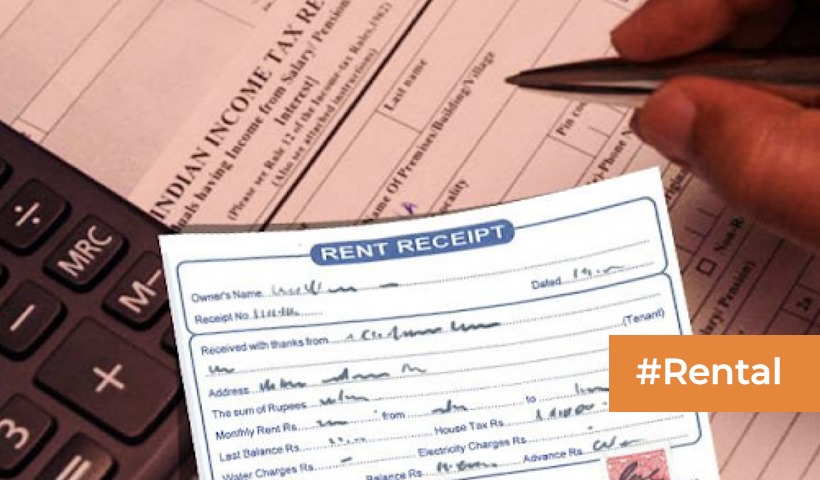Rental Guide: Refund policies and security deposits?
While renting a home, a tenant must pay additional security money to cover any unanticipated or unavoidable expenditures that the landlord may have to incur at the tenant’s request. This sum, known as a security deposit, varies by city; for example, in Delhi, it is normally 1-2 months’ rent, although in some major cities, it might be as much as the full year’s rent. As a result, a potential tenant should clarify the security deposit and refund provisions with the property owner and include them in the rent agreement.
What exactly is a security deposit?
The security deposit is a large sum paid in advance by the renter to the landlord when they move into the rented home. It is retained for the duration of the lease and returned (with or without deductions) when the lease expires. This money is critical for the landlord since it is set aside for unanticipated events that may occur during the tenancy. For example, if the tenant violates the rental agreement by causing property damage or failing to pay the rent, the landlord may utilise the security deposit for repairs or rental reimbursement.
The security deposit is required to be paid in advance by the tenant under the Model Tenancy Act 2021. For residential properties, it cannot be more than two months’ rent, and for non-residential properties, it cannot be more than six months. When the tenant vacates the premises, the security deposit is non-refundable and must be repaid within the time frame specified following an inspection of the property. Although a salaried employee’s monthly rent is qualified for House Rent Allowance (HRA) deduction under Section 10 (13A) of the Income Tax Act of 1961, the security sum does not qualify since it is a one-time payment. It is crucial to know that the cost of fixing any damage caused by the renter to the property, such as holes in the walls or broken windows, might be removed from the security deposit. Fees for correcting normal wear and tear, such as peeling paint or fading wall paint, cannot, therefore, be deducted from the security deposit.
Trends In Major Cities Today
The security deposit for rent needed by the landlord, also known as caution deposit or caution money, varies by state in India. In urban areas, the landlord demands a security deposit based on the cost of living, the kind of region, and the location. The higher the value of the property, the higher the rent and security deposit.
Another key aspect that contributes to a rise in the security deposit amount is the real estate market’s demand and supply. When there is a greater demand for rented housing and a smaller pool of available homes, landlords raise their rental rates. In cosmopolitan cities, income level determines monthly rental and security deposit.
Security Deposit Refunds And Other Typical Rules
A security deposit is required to protect the landlord’s interests in the event of property damage or nonpayment of rent. The Model Tenancy Act allows the landlord to collect rent arrears and other repair expenditures from the security deposit and reimburse the remaining deposit when the tenant vacates the premises and the tenancy expires. If the rental agreement does not indicate otherwise, it is the landlord’s obligation to do structural repairs, whitewashing, external electrical cables, and other maintenance-related concerns as needed. The renters will be accountable for the house’s day-to-day maintenance, such as cleanouts, switch and socket replacements, kitchen fixture repair and maintenance, and glass panel replacement in windows and doors. They will also be responsible for the upkeep of gardens and open areas, as well as the general upkeep of the house.
A rent can be discussed between the tenant and the landlord, and a legitimate rental agreement should be set out to avoid any disagreements at the conclusion of the tenancy.
The agreement must meet the following requirements:
- Both the renter and the landlord must sign it.
- The amount of the security deposit should be specified in the agreement.
- To be legally binding, it must be registered at the sub-registrar office.
- To avoid disagreements, the agreement should explicitly explain both parties’ duties.
What are the dos and don’ts of a Caution Deposit Lease Agreement?
The cautionary deposit is one method of binding the renter and landlord to guarantee that the property is kept in good condition. Nonetheless, in order to avoid future complications, both parties must declare their security deposit requirements in advance.
To establish a harmonious owner-tenant relationship, both sides must follow the following guidelines:
- The amount of the security deposit paid by the tenant to the landlord and the date of its return must be specified in the rental agreement.
- The contract must be signed by both the renter and the owner and contain no unspoken stipulations.
- Landlords must return the security deposit when the leasing term expires. If they subtract anything from the total, a thorough explanation should be provided.
The security deposit amount varies by city; consequently, it is essential that the renter conduct research on the preferred neighbourhood before signing a lease. They may also try employing a real estate agent to help them discover a house within their budget and construct a leasing arrangement that benefits both sides.
Disclaimer: The views expressed above are for informational purposes only based on industry reports and related news stories. PropertyPistol does not guarantee the accuracy, completeness, or reliability of the information and shall not be held responsible for any action taken based on the published information.




